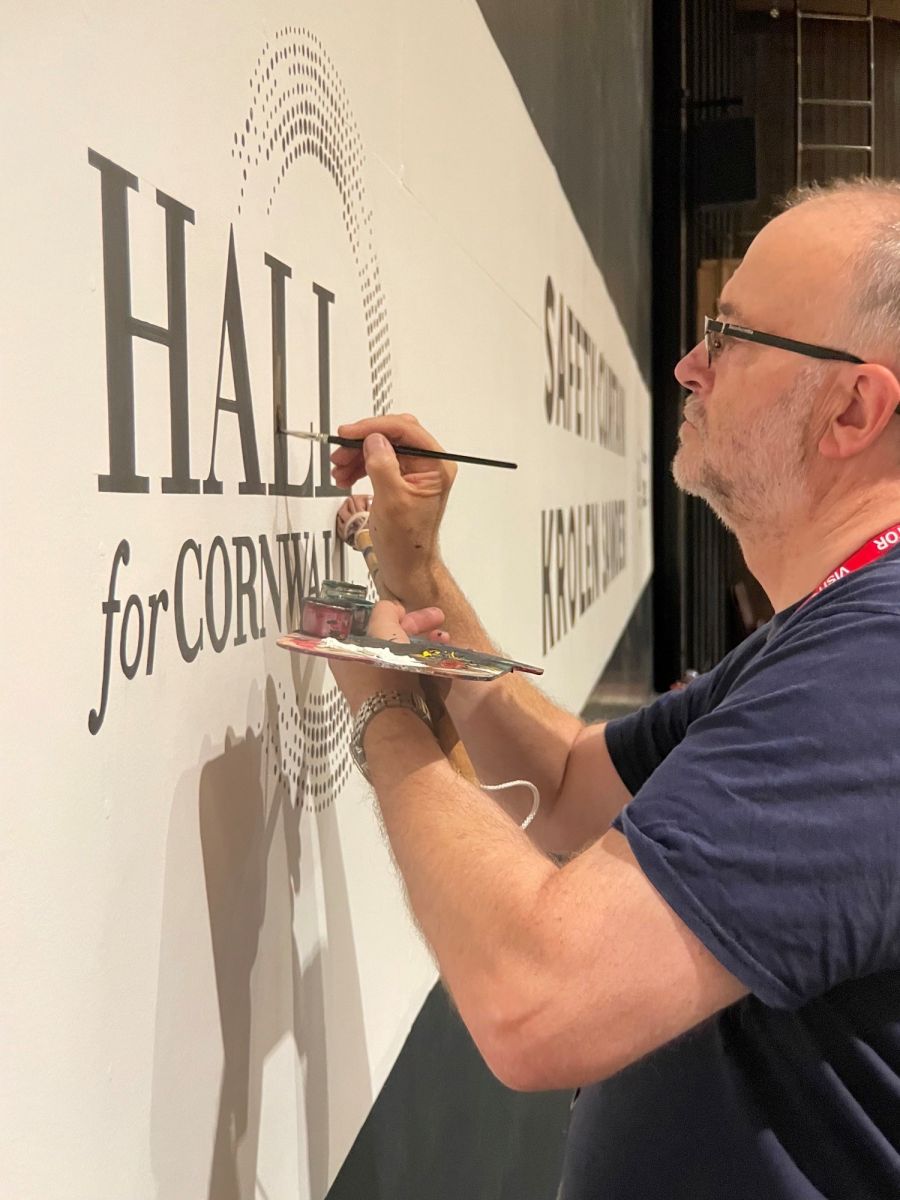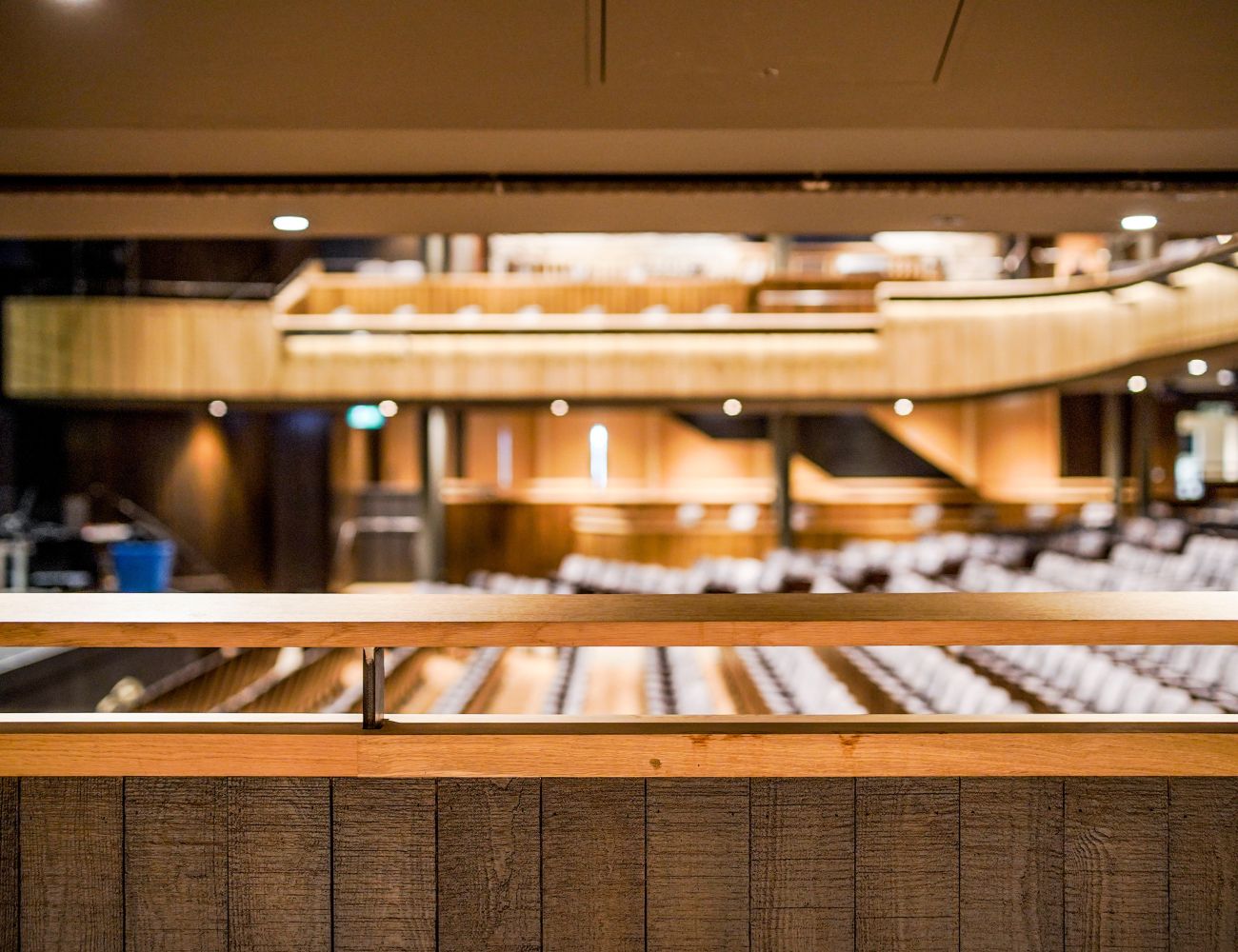Painting the curtain
During the summer, the safety curtain which protects our stage had a makeover. The new design was hand-painted over several days by scenic artist Phil, pictured here; it reflects the generous support of our headline sponsor and also now includes titling in both Cornish and English. Behind every design is a craftsperson with a story. Phil’s story (and how he came to be on our stage) is intriguing, and we think his work is top notch.
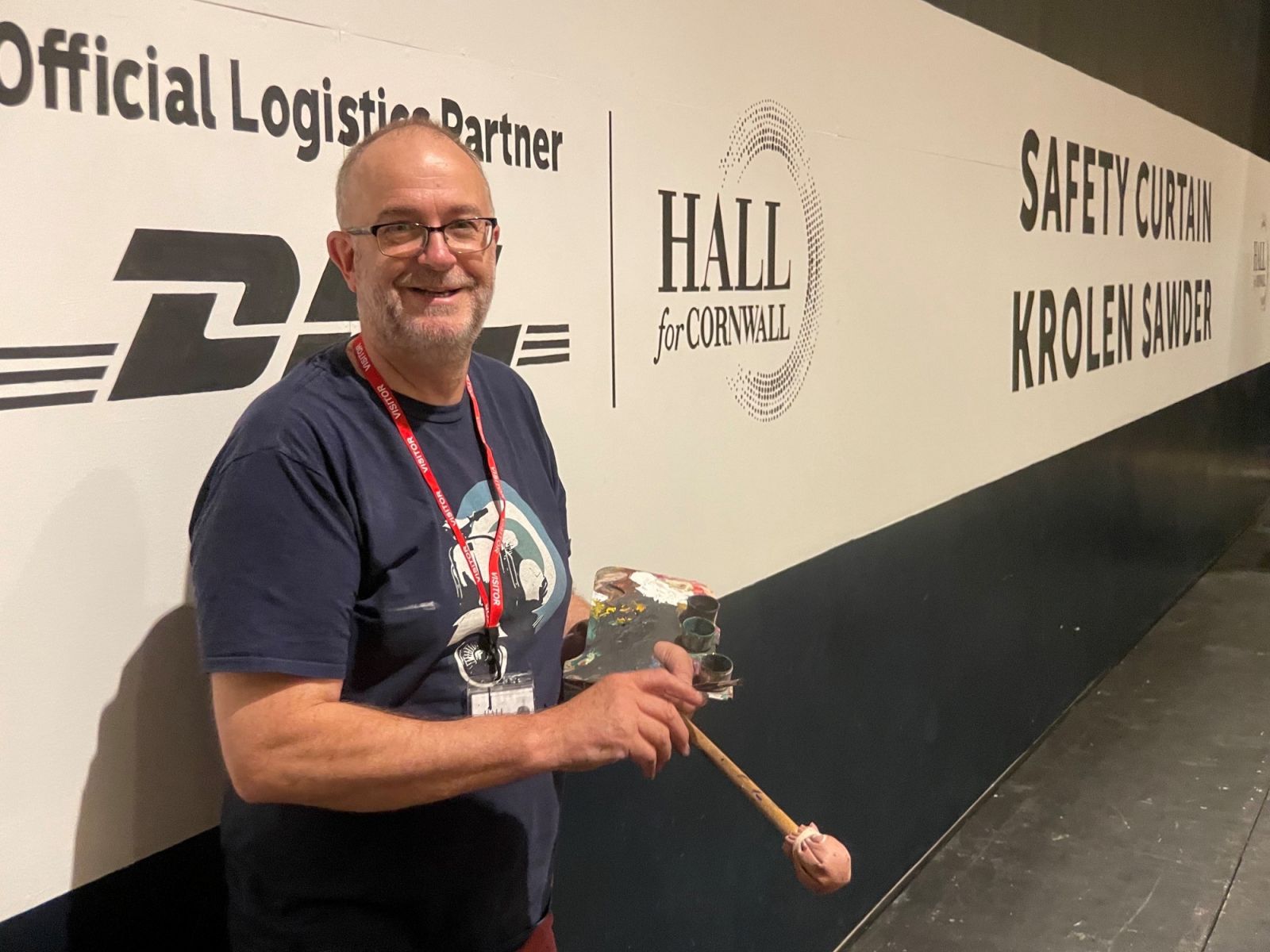
Phil, who runs Vintage Sign Writing, worked at many regional theatres up and down the country, eventually becoming head scenic artist at Theatre Royal Plymouth where he worked on several West End productions prior to their transfer to London. One of Phil’s most notable jobs was painting the original production of Buddy.
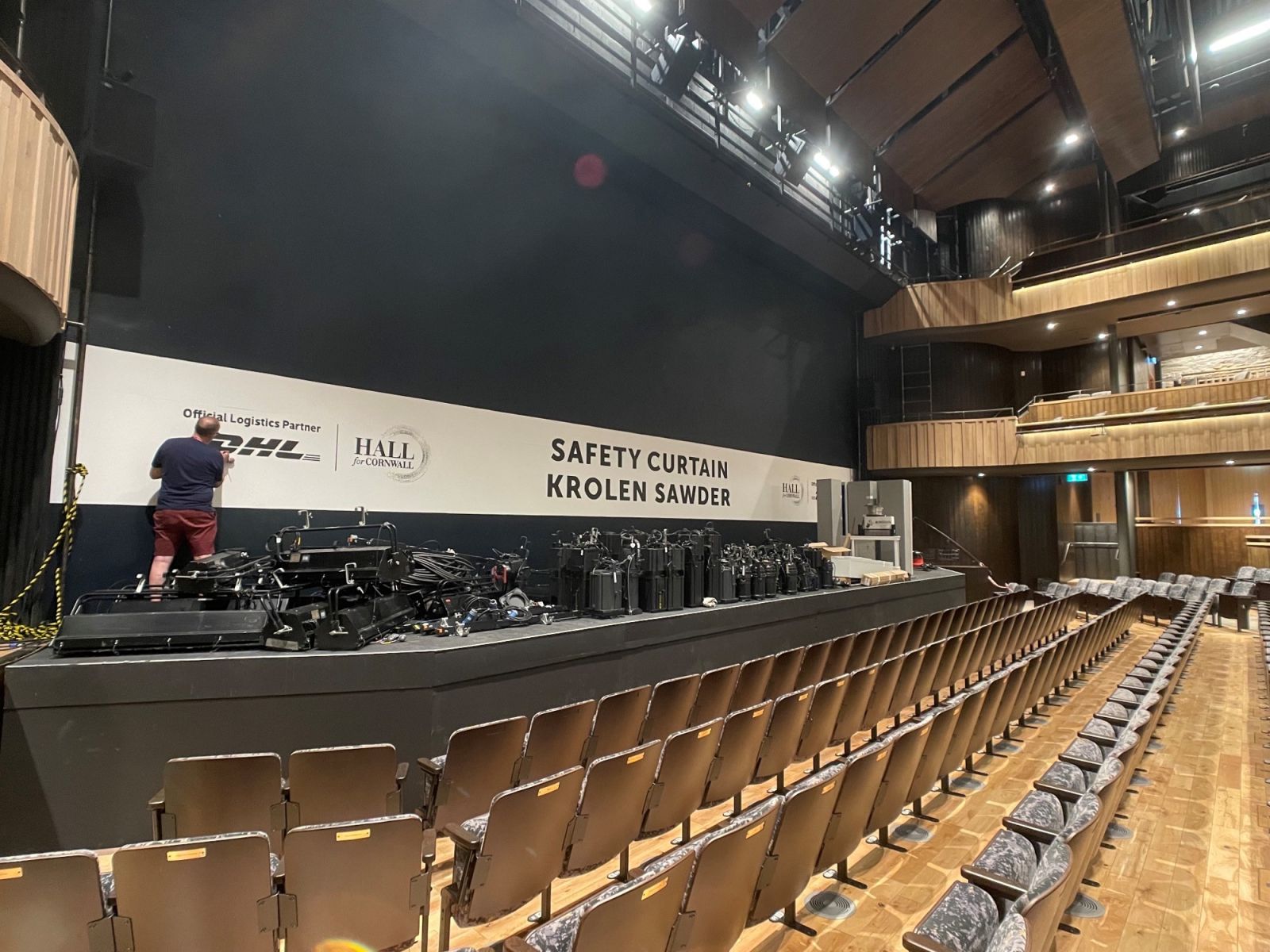
Phil then retrained to work in secondary education, spending over 30 years as a secondary school teacher. Today you’ll find him teaching Art & Design at Bodmin Community College. To find an art teacher in a secondary school with a background in theatre is quite rare and it’s fair to say school productions have never been the same since. In fact they’ve become something of an epic compared to what staff, students and parents might have expected.
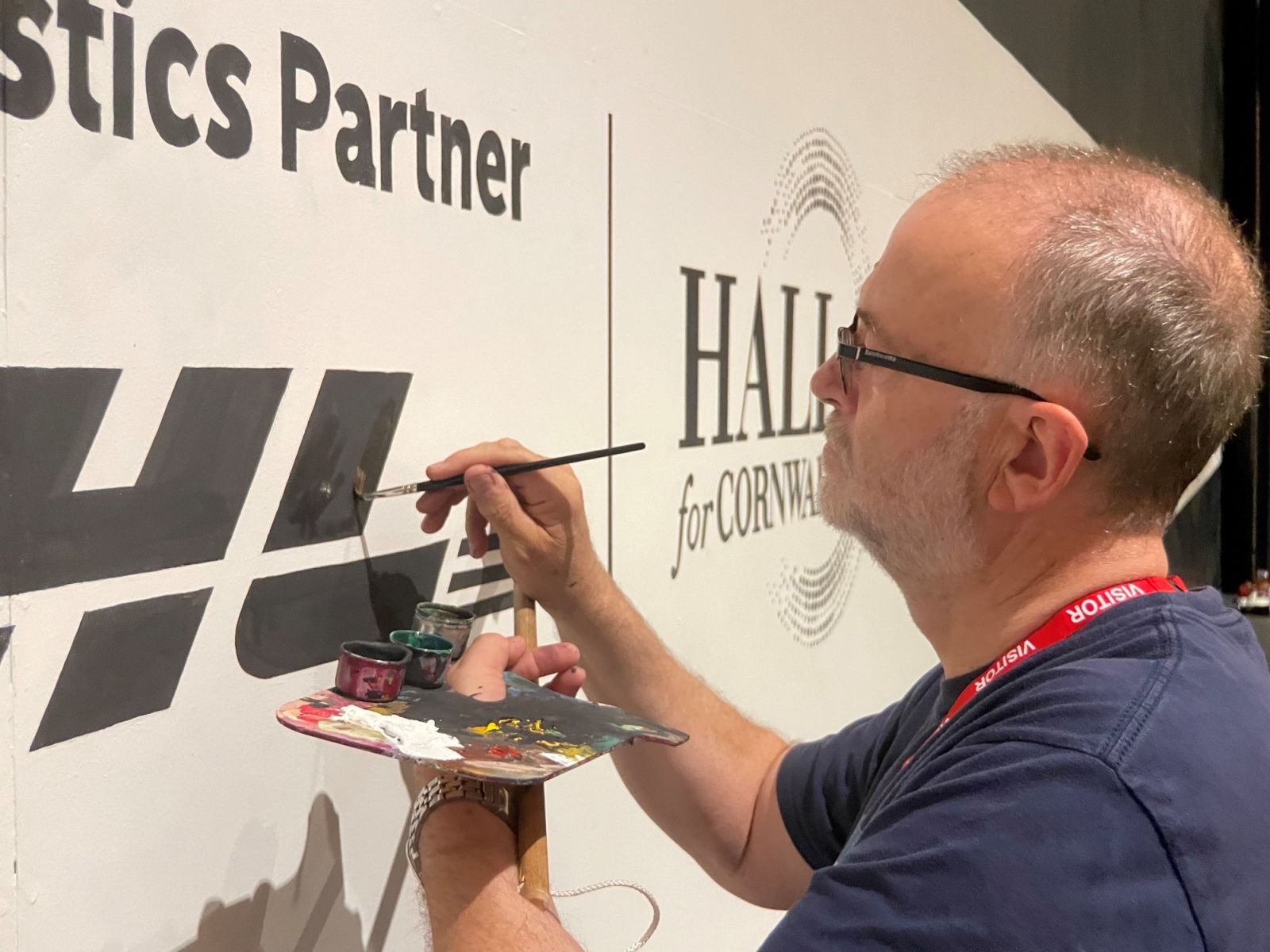
It was after a chance meeting that he had with Hall for Cornwall Chief Executive and Creative Director Julien Boast, when Phil was painting a mural on the outside of Penngelly Garden Centre at Hewaswater, that the painting of the Safety Curtain came about. Julien was quick to spot the theatrical craftsmanship and asked Phil whether he’d do some work in the new Cornwall Playhouse.
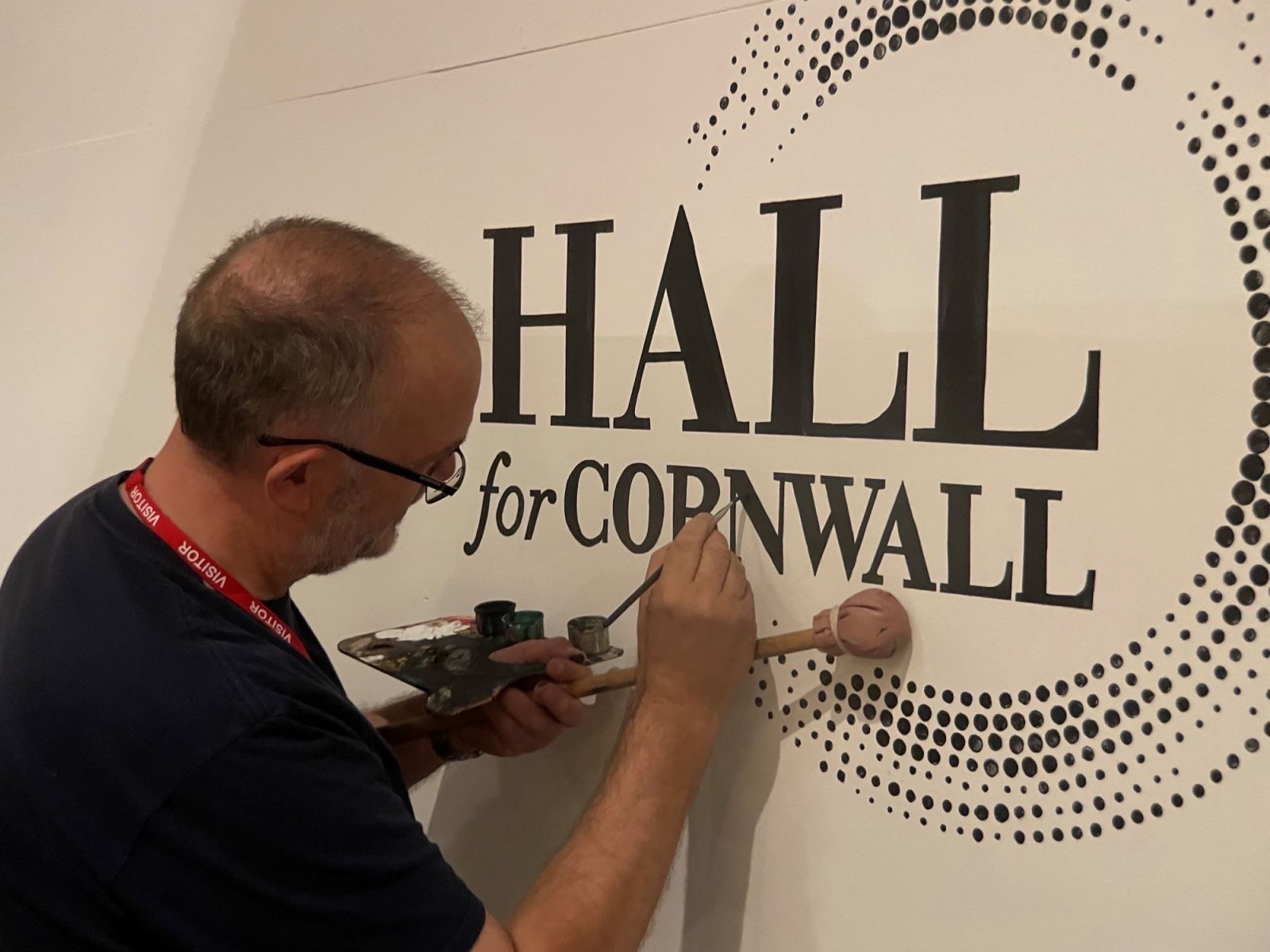
Like so many people in the area, Phil’s Hall for Cornwall story goes back a long way: he has performed (on our old stage) in several amateur productions with Restormel Theatre Company including South Pacific, Hello Dolly and Barnum.
Look out for Phil’s fine work on our safety curtain next time you come into the Cornwall Playhouse – the safety curtain is often in place while the Ope Way is open, most days 11am-4pm, and usually appears before each show, during the interval and after each performance.
